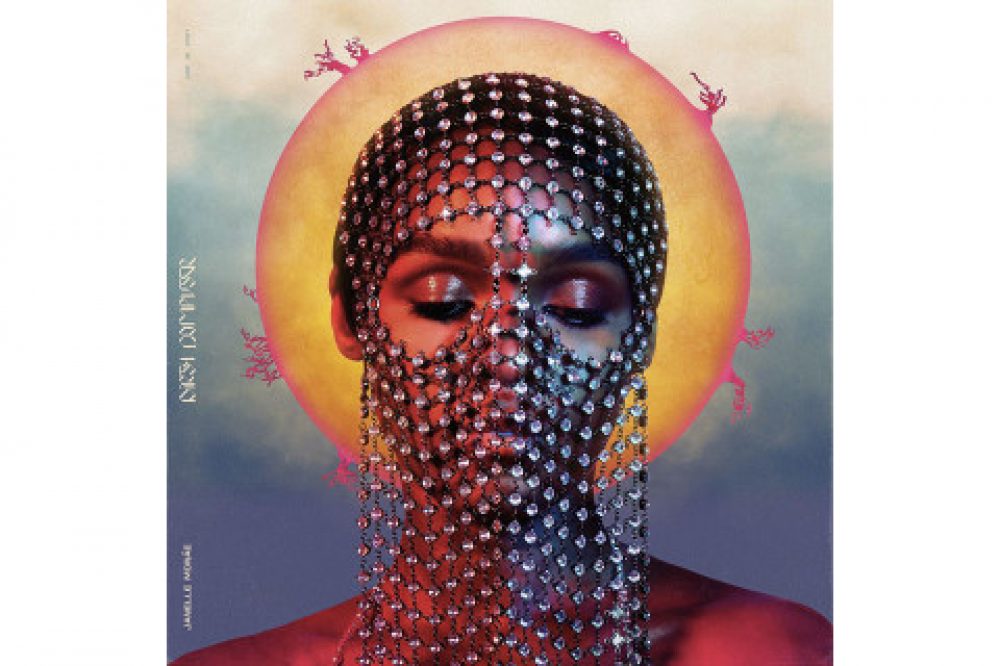Sequencing:
The Photo: A white boy finds a Black girl (Lucy) in the library who piques his interest. He creepily (and non-consensually) takes a picture of her.
The Door: Lucy finds herself suddenly in an empty, all-white space. She finds a red door (with a A button for a doorknob) and runs towards it. She opens the door to find herself in completely new place: Attica – a video game.
The Arms Dealer: Lucy meets a Black man who is selling weapons. His repetitive speech patterns lead Lucy to the conclusion that she is now inside a video game/virtual reality.
The First Boss: The Arms Dealer leads Lucy to the First Boss – an East Asian woman stereotypically dressed in a red & gold martial arts robe. Lucy is forced to fight the First Boss and quickly kills her.
The Final Boss: Another red door mysteriously appears. It leads Lucy to The Final Boss (who looks exactly like the white man from The Photo scene). He is sitting in a chair associated with Wall Street. Lucy tries to stab The Final Boss, but there is a mysterious force-field around him. She breaks her sword trying to stab him. The screen says “Game Over.” The end credits roll and Lucy is returned to Level 1. She tries again and again and again…
The Arms Dealer Part 2: Lucy approaches the Arms Dealer again. This time, she flipping back and forth between the menu options “buy, steal, trade” so that the Arms Dealer glitches. The Arms Dealer is freed and thanks Lucy profusely. He joins her on her quest to kill the Final Boss and escape the “game.”
The First Boss Part 2: Lucy and The Arms Dealer refuse to bow to The First Boss. They wait for hours and hours until she glitches and “breaks free” of her controlled, avatar body.
The Final Boss Part 2: Lucy walks back and forth across the threshold of the Final Boss’s office, so that he is forced to keeping turning around in his black swivel chair. He ultimately glitches and disintegrates entirely. Color returns to the scene/story and Lucy, smiles, holding her own crumbling image in her hand.
Structural Analysis
Wall Breakers plays with the images that invade our virtual and actual realities, drawing connections between modern-day imaging technologies and the long-standing history of using images to manipulate and exploit people of color (PoCs). In Wall Breakers, we flip the script. The real world is often portrayed as a prison, whereas the virtual world, and videogames (like GTA5), are often portrayed as a separate sphere allowing for freedom and fantasy.
In this story and structural analysis we juxtapose the first and final scenes of Wall Breakers to explore the ways in which the virtual world mirrors the incarceration of the “actual” world – especially the incarceration of people of color.
In the first scene, a white man with exaggeratedly Aryan features (bright, blue eyes and bleach, blonde hair) captures Lucy’s image without her consent, using the facial recognition technology on his iPhone.
Before Lucy is ever even transported to Attica (the video game world, aptly, is named after the real-world prison where the world’s most famous Prison Uprising took place) she is trapped within the four, black walls of the iPhone’s case. In this way, we can see that imaging technology is its own kind of prison. In this scene the overwhelming whiteness of the page – and the photographer/game creator (who is wearing a white hoodie) – is contrasted by Lucy’s bright, yellow shirt – a colorful light encased in the four “walls” of the iPhone’s case – floating in a sea of white space, representative of the power dynamic at play between white and black, male and female characters.
We deliberately chose to make Lucy a Black woman because even when Black women are “included” in video-games, they are rarely the ones creating and defining the story or being catered to as its primary consumers/players. We were inspired by Black Mirror’s episode “Black Museum” where Nish – a tech-savvy Black woman – frees her father (a Black man) and the other women and PoCs who’ve been encased in Rolo Haynes’ museum primarily for the viewing “pleasure” of other wealthy white men.
In the final scene, we see Lucy’s arm protruding triumphantly from the bottom of the page. Her arm – raised, perpendicular to the page – is reminiscent of the Black Power fist. In this scene, she holds onto the same image from the first scene (her OWN image). In this way, we see that, collectively (with the help of the other PoC characters), she is able to reclaim her own image, and dictate the circumstances under which it will or will not be disseminated.
This reclamation reintroduces color into what was initially an all-white scene. Importantly, the final scene is filled with various shades and hues that are richly connected to the intersecting identities of the WoC characters (Lucy and The First Boss). As her image/avatar shatters, Lucy’s background shifts from light to dark purple – although this was the color of her hyper-sexualized costume, here, it takes on a different connotation, one which harkens back to Alice Walker’s famous quote “Womanist is to feminist as purple is to lavender.” She seems to be embracing an image that is no longer tied to the whiteness and maleness of the Final Boss who first non-consensually captured her picture.
The cyclical nature of video-games and the limited options available to players/avatars make them perfect metaphors for real-life cycles, like the cycle of poverty that we see Lucy studying at the beginning of the story. But, in this final scene, we wanted to reinsert Lucy’s agency. She – like us – is not bound to repeat the same stories and use the same technologies. She can rewrite the story – or refuse to play with existing systems of power.
